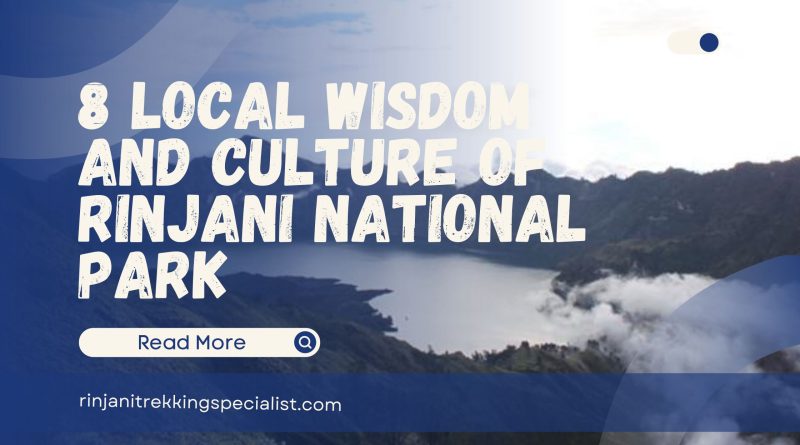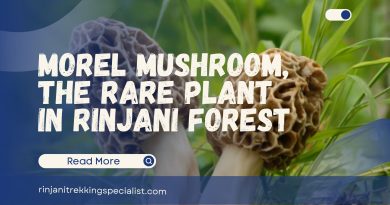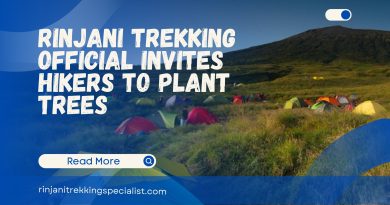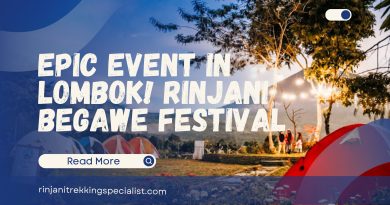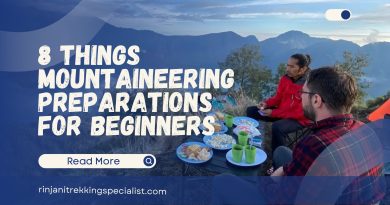8 Local Wisdom and Culture of Rinjani National Park
The most amazing thing about Rinjani National Park is its local wisdom and culture. Even though it has become a world natural tourist destination, Rinjani National Park still maintains its local wisdom.
Therefore, it is only natural that this National Park becomes a world-class natural destination because those who protect it are the people themselves. Meanwhile, the Sasak tribe as the original tribe of the island of Lombok contributes to maintaining cultural preservation.
Rinjani Local Wisdom
Rinjani National Park on the island of Lombok, Indonesia has traditions and local wisdom that still survive today. What are the wisdom and culture that still exist today? Launching from the Mount Rinjani National Park (BTNGR) Parman Trekker as a Rinjani trekking specialist will discuss it for you:
Taek Daye Semboya Culture
This culture is the culture of the original Santong community. Meanwhile, the village of Santong is only a few kilometers from Lake Segara Anak. The lake is located at an altitude of 2000 meters above sea level in the Rinjani National Park, while the peak of Mount Rinjani itself has an altitude of 3726 meters above sea level.
The village in the valley of Mount Rinjani is in the district of North Lombok. In this village, there is a ritual or culture of Taek Daye Semboya which is a hereditary tradition. The purpose and purpose of this culture is to honor the ancestral spirits of the surrounding community.
Nyeran Adat Culture
This culture is the culture of the Semokan indigenous people. The Semokan area is a hamlet, which is included in the administrative area of Sukadana village in Lombok.
This culture has the aim of showing happiness and gratitude. It is related to the successful harvest of crops. The sense of happiness is expressed in the form of cultural events.
Ngasuh Gunung Culture
This cultural ritual is a form of respect for nature and asking for safety from danger. The location of this culture is located on the Mount Rinjani hiking trail through the Torean and Senaru trails.
The local wisdom of the community culture shows concern and respect for nature. In addition, this culture aims to invoke safety from natural disasters such as mountain eruptions, landslides, and tornadoes.
Pancaka Mulang Pekelem Ceremony
This cultural ceremony is located in Segara Anak Lake which is a lake above Mount Rinjani. This culture is carried out by the Hindu community of Lombok.
Culture in the form of this ceremony has the spiritual value of religious belief. The activities of this culture are in the form of praying and giving offerings in the form of ‘offerings’. Where these offerings are intended for the gods of the Lombok Hindu community to get prosperity and welfare.
Offerings or offerings in the form of gold, silver, and copper. In addition, there are offerings or offerings in the form of crops form as fish and shrimp to the god of the ruler of the Segara Anak Lake.
Read here: Facts About the RINJANI 100 Ultra Marathon Event
Meditation culture
Meditation is the culture of the Sasak people of Lombok. sasak is the name of a tribe native to the island of Lombok. As a local indigenous tribe, meditation is a culture to achieve tranquility.
People meditate in caves around Mount Rinjani. Among others in the milk cave and in the umbrella cave. Are you one of those people who like to meditate? It looks like the location of the cave in the Rinjani National Park can be the best place to meditate.
Heritage Cleaning Culture
This culture aims to clean heirlooms. Objects that are relics of the past have artistic and traditional values so that they are preserved.
The people of the Sasak tribe routinely do it in the milk cave and Aik Kalaq. In addition, both places are also exotic tourist destinations in the Rinjani National Park.
Medicine Culture
The hot water of Mount Rinjani is believed to provide healing. The Sasak people of Lombok make it a treatment ritual for healing from disease.
Soaking in hot water has other virtues such as providing freshness, treating flu, and curing skin diseases.
The content in hot springs from geothermal Rinjani is good for health. the main thing is to treat skin diseases and treat acne on the face.
Sacred Bathing Culture
The location of this sacred bath is in Aik Kalaq around the Segara Anak Lake. Aik Kalaq is the headwaters of the river a place believed to be for self-purification.
Aik Kalak is a geothermal source around Mount Rinjani. derived from the Sasak language, Aik Kalaq which means “hot water”.
There was once a story about the sacredness of this hot spring bathing place. It is said that Aik Kalak is the bathing place of one of Lombok’s famous puppet characters, Jayengrana. wayang is a traditional art from Indonesia.
Read here: Traditional Houses Can Store Food !
Also read here: Traditional Street Food Can Make Music?
Summary
Lombok Island is an island famous for its beautiful beaches and Mount Rinjani. In addition, there are many villages around Mount Rinjani such as Sukadana Village, Santong Village, and other villages. As a settlement of the local community, the village is the location of a unique culture and local wisdom. So with the richness of culture, it further emphasizes the reputation of the Rinjani National Park as a world-class tourist destination.
Every day there are many visitors to Rinjani National Park to conquer the challenging peak of Mount Rinjani. Then, see the sunrise at the summit, bathe in Segara Anak Lake at an altitude of 2000 mpdl, and the excitement of camping. In addition, non-climbing natural destinations are no less exciting such as river bathing, waterfall viewing, and cycling. All of them is the excitement of being here.
Thus the review of Parman Trekker as a Rinjani trekking specialist about the rich culture of the people around Mount Rinjani National Park.
Previously we had discussed the flora and fauna habitat of the Rinjani forest and tourism events on Mount Rinjani. it is solely to inspire readers to contact us immediately when visiting the island of Lombok. Because it is incomplete when visiting the island of Lombok but not hiking Mount Rinjani.

